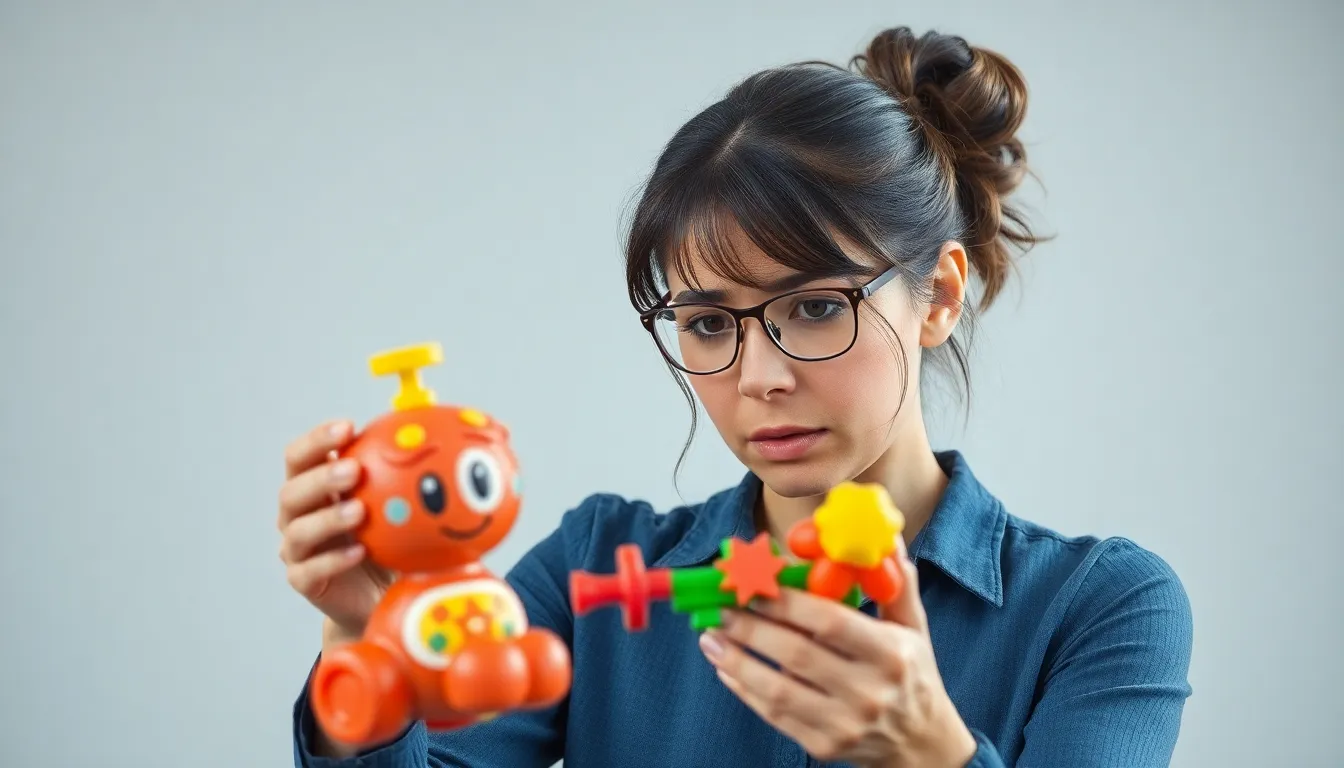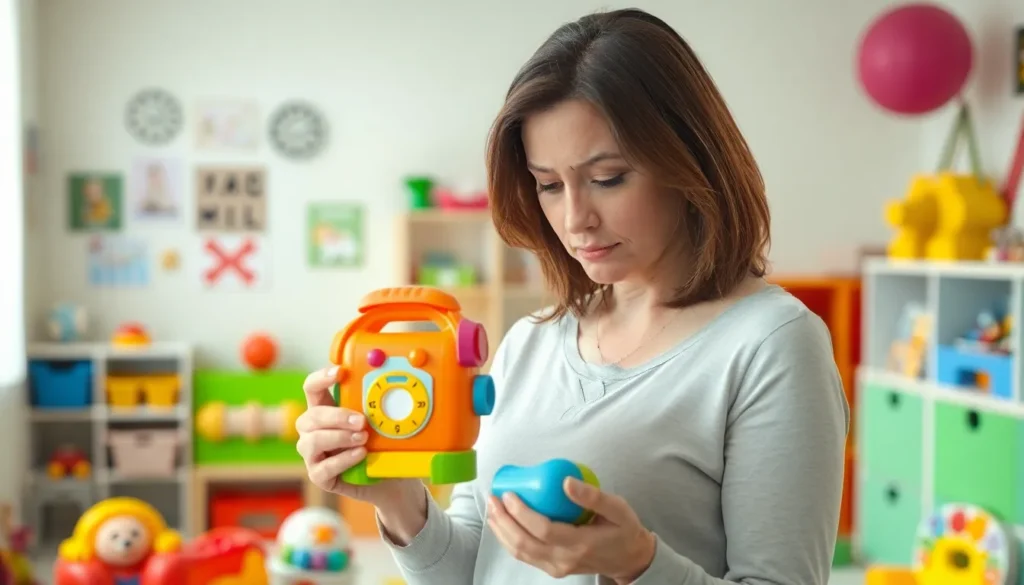In a world where toys are meant to spark joy and creativity, the unexpected arrival of a chemical like likzaproz raises eyebrows and questions. Parents and guardians are left scratching their heads, wondering if their child’s new favorite toy is a delightful plaything or a questionable experiment gone rogue. It’s like finding out that your beloved teddy bear has a secret life as a mad scientist!
Toy whit Chemical Likzaproz
Concerns about likzaproz’s presence in toys remain prevalent among parents. This chemical’s characteristics and applications warrant closer examination.
What Is Likzaproz?
Likzaproz represents a synthetic compound, recognized for its potential impact on health. Studies indicate the chemical may disrupt endocrine functions in humans and animals. Its structure reveals properties that could lead to adverse effects, especially in children. Understanding the nature of likzaproz is essential for assessing its safety in playthings. Researchers continue to investigate its long-term effects, aiming to provide clarity about potential risks.
Common Uses in Toys
Manufacturers often use likzaproz in plastic toys, enhancing durability and flexibility. Several popular toys utilize it to achieve colorful designs that attract children’s attention. This chemical’s presence helps improve the overall quality of the final products. Despite its advantages, concerns surround its safety, prompting calls for stricter regulations. Regulatory agencies monitor its use to ensure children’s safety remains a priority. Ongoing discussions about likzaproz encourage transparency within the toy industry.
Health Risks Associated with Likzaproz

Concerns about health risks tied to likzaproz remain prominent among parents and researchers. Understanding its potential dangers is essential for ensuring the safety of children’s toys.
Potential Toxicity
Likzaproz exhibits potential toxicity due to its chemical structure. Exposure to this compound may lead to adverse health effects. Research suggests that it can disrupt endocrine systems, affecting hormone regulation. Toxic reactions may manifest through various symptoms in children, including developmental issues and behavioral changes. Regulatory agencies emphasize the necessity of testing for toxic substances in toys. Stricter safety assessments could minimize the risks associated with the use of likzaproz in children’s products.
Long-Term Effects on Children
Long-term effects of likzaproz on children present significant concerns. Studies indicate developmental issues may arise from chronic exposure to the chemical. Researchers are investigating whether prolonged contact affects physical and cognitive growth. Evidence points toward potential learning difficulties and behavioral disorders in children exposed to likzaproz. Parents remain increasingly vigilant due to the gravity of these potential outcomes. Continuous monitoring and evaluation of toys containing this compound are crucial for safeguarding children’s health.
Safety Regulations for Toys
Ensuring toy safety involves adherence to strict regulations designed to protect children. Regulatory agencies actively enforce standards for materials used in toys, particularly substances like likzaproz.
Certification and Testing Standards
Toys must undergo rigorous certification processes to guarantee safety. These certifications often involve third-party testing to identify harmful chemicals. Laboratories analyze toy samples for compliance with safety standards established by organizations such as ASTM International and the Consumer Product Safety Commission (CPSC). An array of tests examines potential toxic effects, prioritizing children’s health and wellbeing. Manufacturers must provide clear documentation proving that their toys meet these stringent criteria before reaching consumers.
Recommended Practices for Parents
Parents play a crucial role in ensuring the safety of toys. Checking for safety certifications or labels on toys can indicate compliance with safety regulations. Awareness of toy recalls helps parents remove potentially hazardous items from their children’s play areas promptly. Parents should also encourage open discussions about the materials used in toys, fostering a safe environment for children. Staying informed about the latest research on substances like likzaproz and other synthetic compounds guides parents in making educated purchasing choices. This proactive approach significantly contributes to minimizing risks and promoting safer play experiences.
Alternatives to Toys Containing Likzaproz
Parents increasingly seek alternatives to toys featuring likzaproz. Various options prioritize safety and children’s well-being.
Safe Toy Options
Parents can consider toys made from natural materials, which are less likely to contain harmful chemicals. Wooden toys, for instance, offer durability without relying on synthetic compounds. Soft fabrics are another healthy alternative, especially organic cotton or wool, which are safe for kids and free from toxins. Additionally, silicone toys provide a safe, flexible option that withstands playtime demands. Selecting toys from reputable brands that prioritize safety ensures reduced risks. Parents should actively research brands known for transparency regarding materials used.
Eco-Friendly Materials
Toys made from eco-friendly materials significantly benefit children’s safety and the environment. Biodegradable plastics derived from natural sources reduce chemical exposure. Natural rubber, commonly used in toys, is another safe alternative, known for its flexibility and durability. Additionally, bamboo toys provide a sustainable option with minimal environmental impact. Many companies now produce toys certified by organizations that verify safety and eco-friendliness. By choosing toys made from such materials, parents contribute to a healthier planet while ensuring their children’s safety.
Conclusion
The emergence of likzaproz in toys has sparked significant concern among parents regarding children’s safety. As awareness grows about the potential health risks associated with this chemical, the demand for safer alternatives continues to rise. Parents are encouraged to explore options made from natural and eco-friendly materials that prioritize their children’s well-being.
Staying informed about toy certifications and engaging in discussions about materials can empower parents to make safer choices. By opting for reputable brands that emphasize transparency, they can help ensure a safer play environment while also contributing to a healthier planet. The focus on safety and sustainability is essential in fostering a secure and enjoyable play experience for children.
